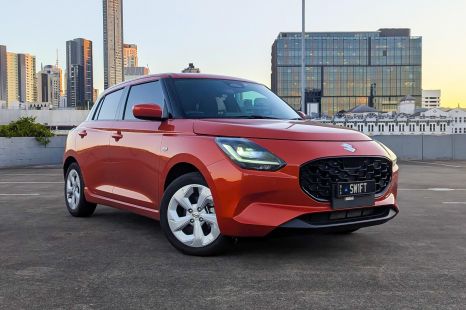

William Stopford
2025 Suzuki Swift Plus review
4 Days Ago
Where expert car reviews meet expert car buying – CarExpert gives you trusted advice, personalised service and real savings on your next new car.
Name more than one full-size electric SUV with three rows of seating… I’ll wait.
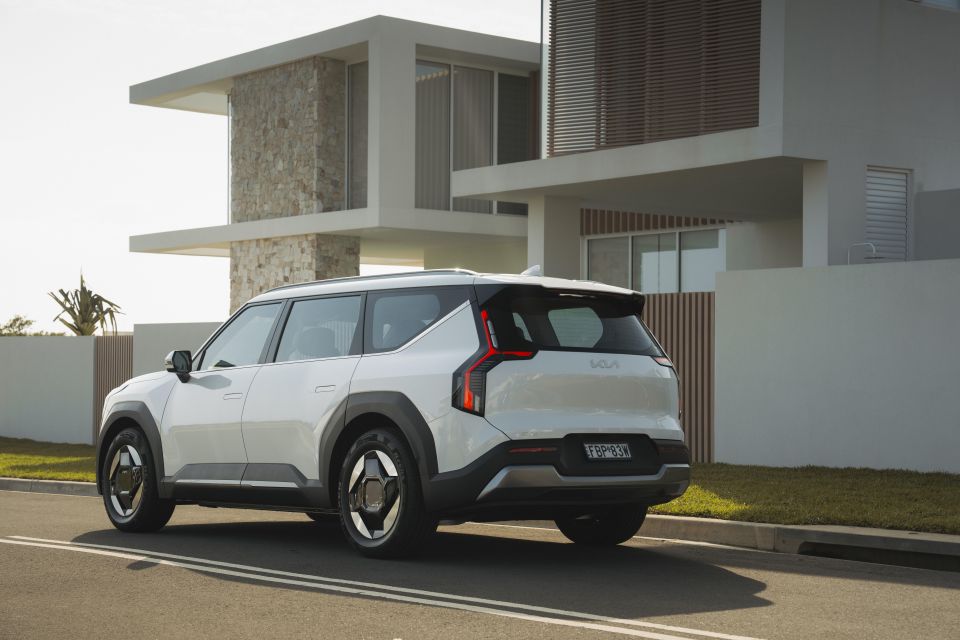
If you managed to think of one, well done. The Mercedes-Benz EQS SUV is the only one – or it was. The 2024 Kia EV9 is the biggest, most expensive vehicle the Korean brand has ever offered in Australia.
Starting from a smidgen under $100,000, it’s far from the cheap and cheerful city hatchbacks Kia made a name for itself with.
Measuring 5.0 metres long and nearly 2.0 metres wide, you can think of the EV9 as an electric Kia Telluride – which thus far has been forbidden for Australia due to its North American production, unlike the related Hyundai Palisade which is sourced from South Korea.
There’s room for up to seven people and a claimed driving range of over 500 kilometres with its largest battery, with equivalent size and performance to the aforementioned EQS SUV which starts for around double the money.
But six figures is a lot of money, and many will add “for a Kia” to the end of that. Does the Korean brand’s all-electric hero justify its lofty price tag?
We joined the Australian media launch drive to find out – and the answer is mostly ‘yes’.
Pricing for the 2024 Kia EV9 starts from $97,000 before on-road costs for the entry-level Air RWD.
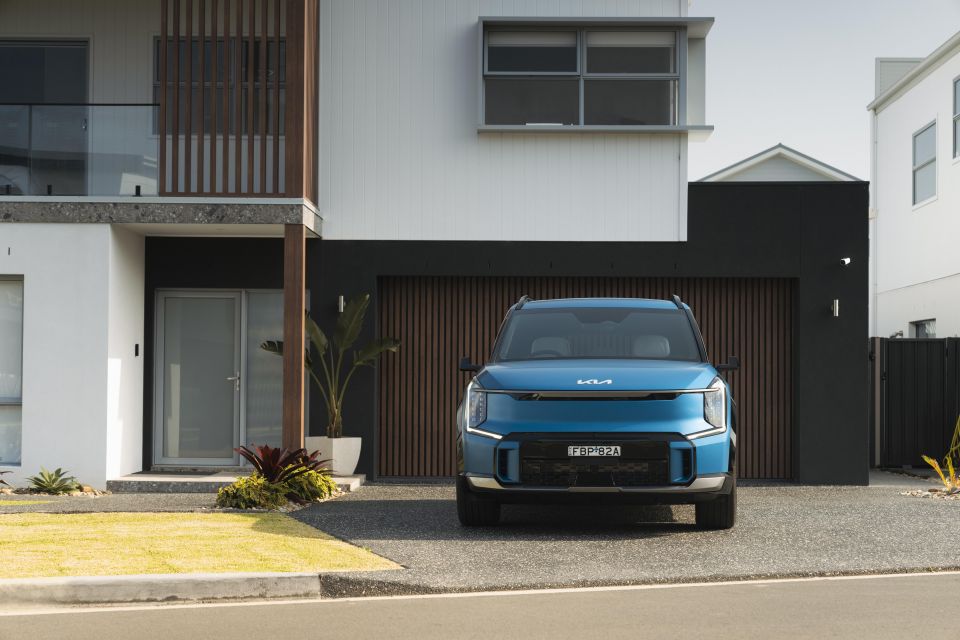
That means even the base model will cost you over $100,000 drive-away, while the Earth AWD and GT-Line AWD list for $106,500 and $121,000 before on-roads respectively. The Earth is a little delayed, currently earmarked for an early 2024 arrival – the Air and GT-Line are landing now.
A key thing to note is the Air gets the smaller Standard Range battery (76.1kWh) while the Earth and GT-Line get a Long Range battery (99.8kWh), all with li-ion chemistry.
As noted earlier, there’s little in the way of direct competition for the EV9, particularly at this price. The Mercedes-Benz EQS 450 4Matic SUV is a similar size but double the price, at $194,900 plus on-roads.
Mercedes-Benz sells the only other seven-seat electric SUV, with the much smaller EQB 250 available with an optional third row starting from $87,734 plus on-roads with the sixth and seventh seats costing a further $2900.
Otherwise, if you want an electric vehicle with three rows of seating you have to start looking at electric people movers like the LDV MIFA 9 (from $104,000), the Mercedes-Benz eVito Tourer (from $127,018) and EQV (from $157,450), which are all more expensive than the Kia.
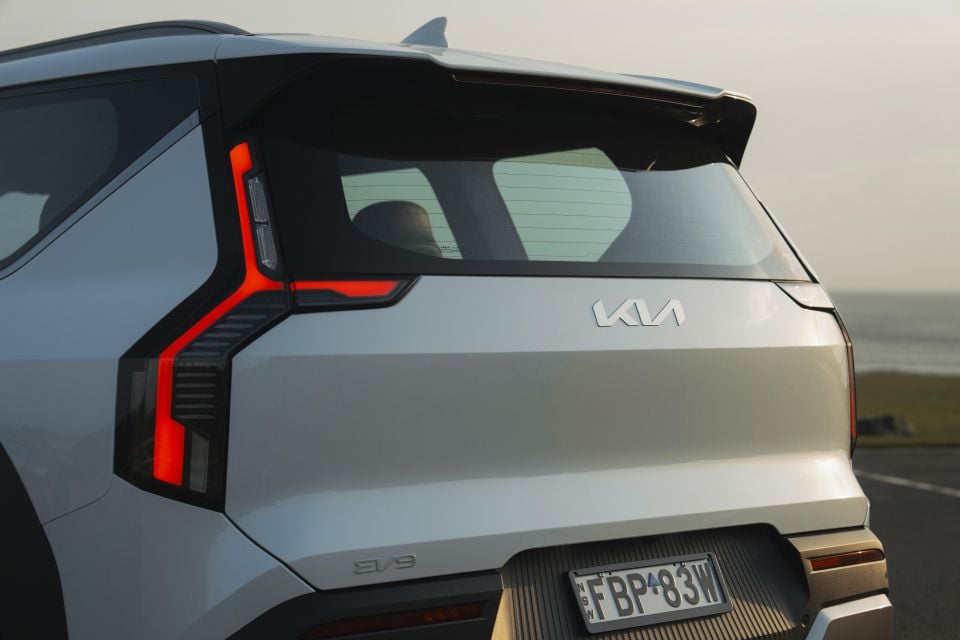
2024 Kia EV9 pricing:
Prices exclude on-road costs
The EV9 ushers in a new interior design direction for the brand, which seems to hone in on simplicity and space.
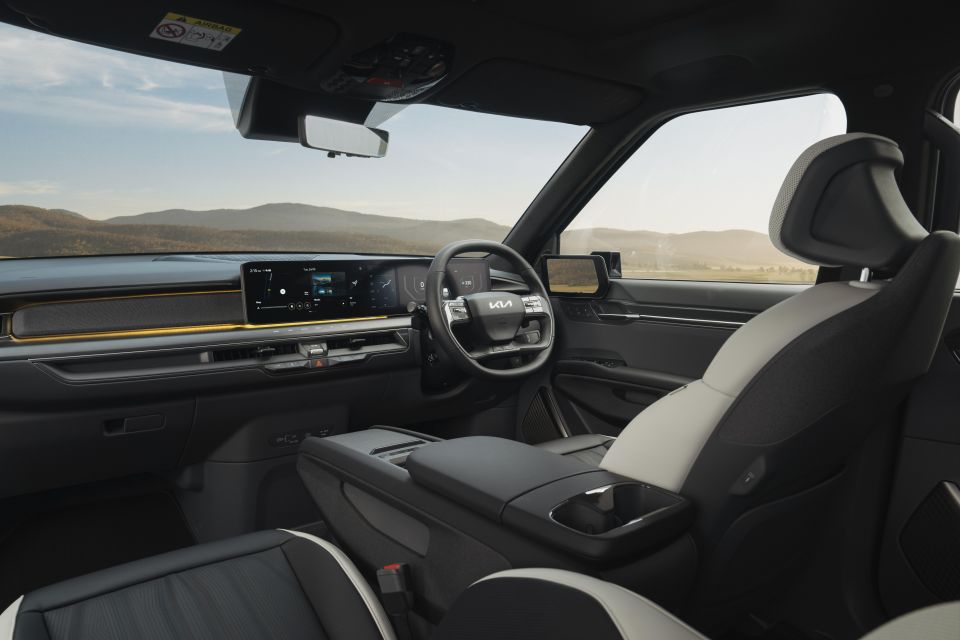
It may be a little plain for some – including yours truly in areas – but the overall presentation is clean and the quality of fit and finish is pretty good.
Standard eight-way electric seats across the range with lumbar feature from the Air up, with the GT-Line scoring four-way lumbar and powered bolsters. The GT-Line’s contrast upholstery and nicer trimmings around the centre console definitely elevate the ambience over the Air, as does the suede headliner.
Adding to the standard niceties, even the base Air scores heated and ventilated front seats, and heated steering wheel, while the GT-Line adds Premium Relaxation Seats including power leg rests up front and a driver massage function.
The seats themselves are mighty comfortable across the range, with couch-like suppleness and support, while the mesh headrests are gentle on your head. All versions get artificial leather trim and a range of sustainable materials as Kia looks to reduce its environmental impact, including bio-based plastics and finishes. Kia is gradually phasing out the use of leather globally.
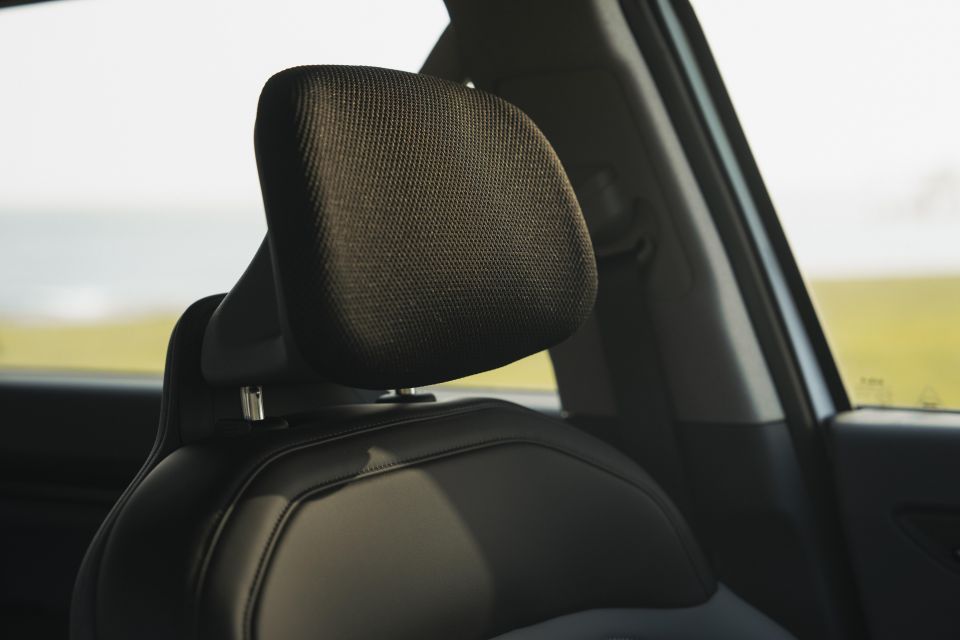
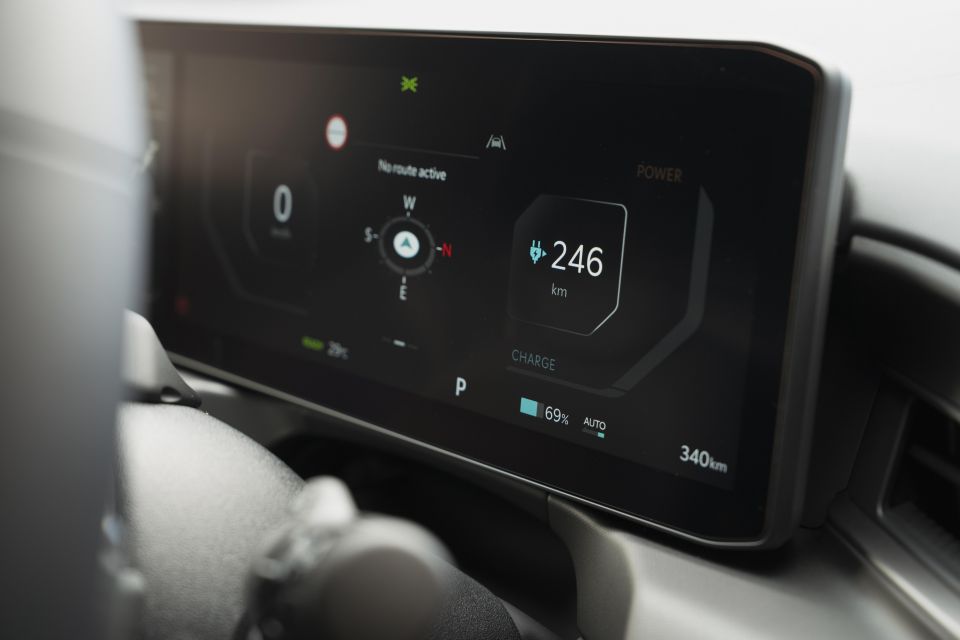
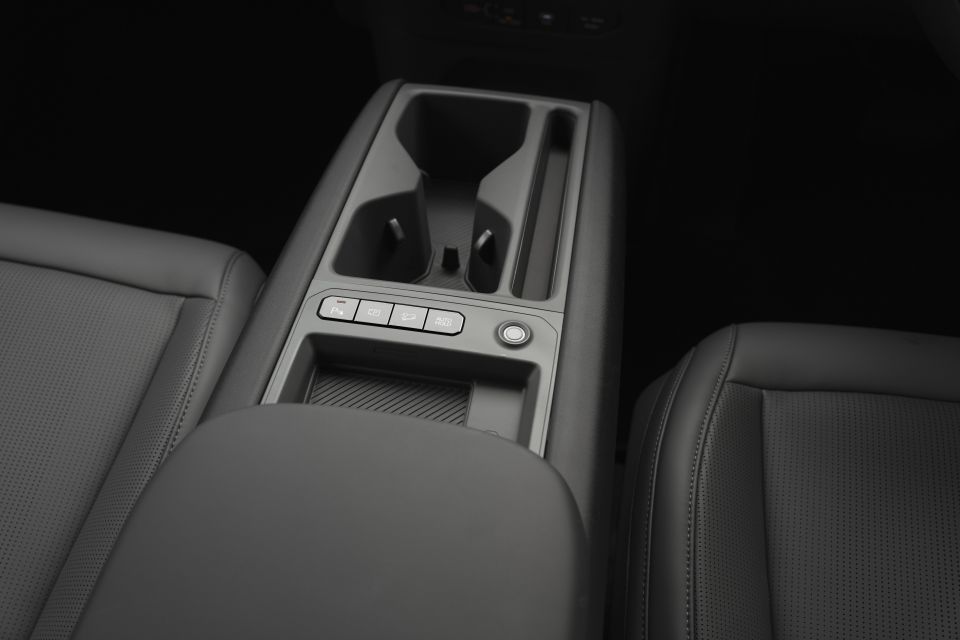
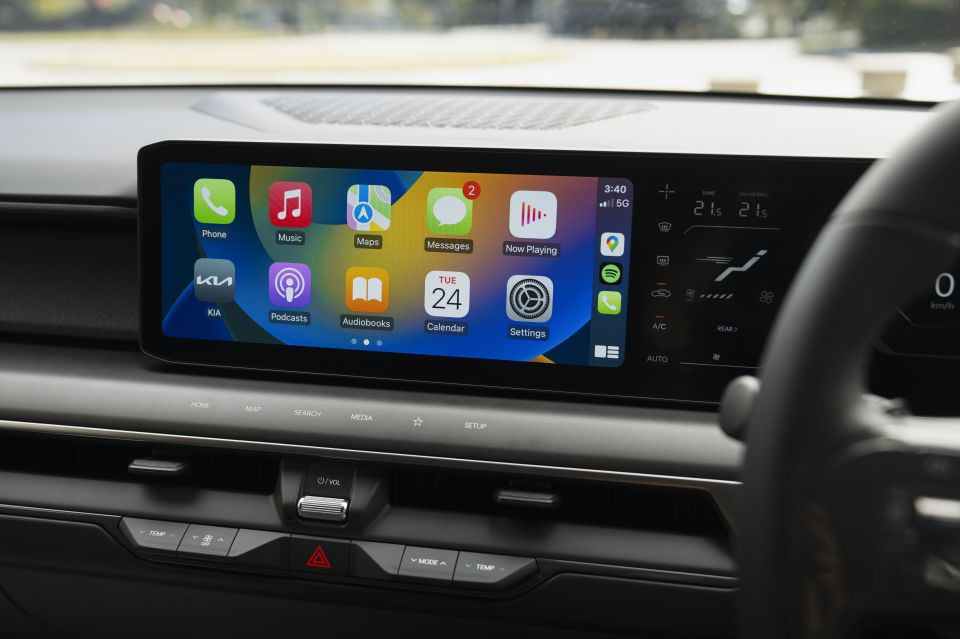
Highlights include recycled PET fabrics and carpets, the latter made out of repurposed fishing nets, as well as paint that has been produced free of benzene, xylene and toluene. Even the suede headliner in GT-Line versions is made from recycled materials.
There’s a new Connected Car Navigation Cockpit which will eventually filter across the range, incorporating dual 12.3-inch displays for the driver cluster and infotainment touchscreen, as well as a 5.0-inch panel for the climate control to supplement the temperature and fan toggle switches below.
It’s all very much an evolution of Kia’s previous infotainment and information systems, and is very similar in style and layout to what we’ve seen in new Hyundais like the Kona and Sonata. It all works well and is full featured – navigation, AM/FM/DAB radio, Bluetooth, Apple CarPlay and Android Auto, as well as ‘Phase 2’ of Kia Connect.
The latest version of Kia’s telematics services includes the hardware and software for over-the-air updates. These can include navigation mapping, infotainment software as well as 60 per cent of the vehicle’s on-board controllers.
CarExpert recently confirmed the EV9 will debut wireless smartphone mirroring for the brand’s navigation-equipped models in Australia, and it will… eventually. At this stage there’s a software update coming around December which will activate the feature for both Apple and Android users.
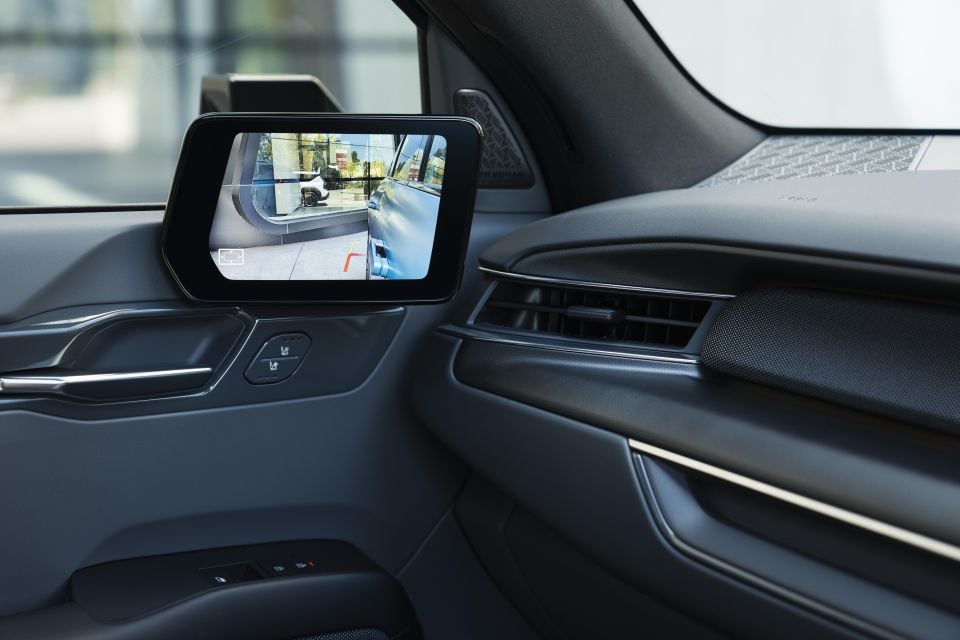
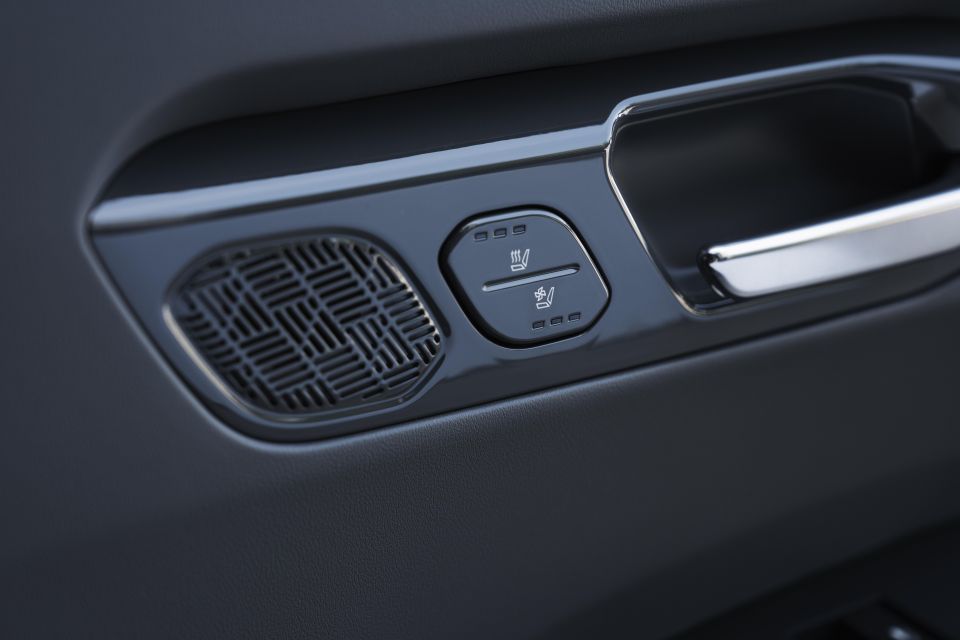
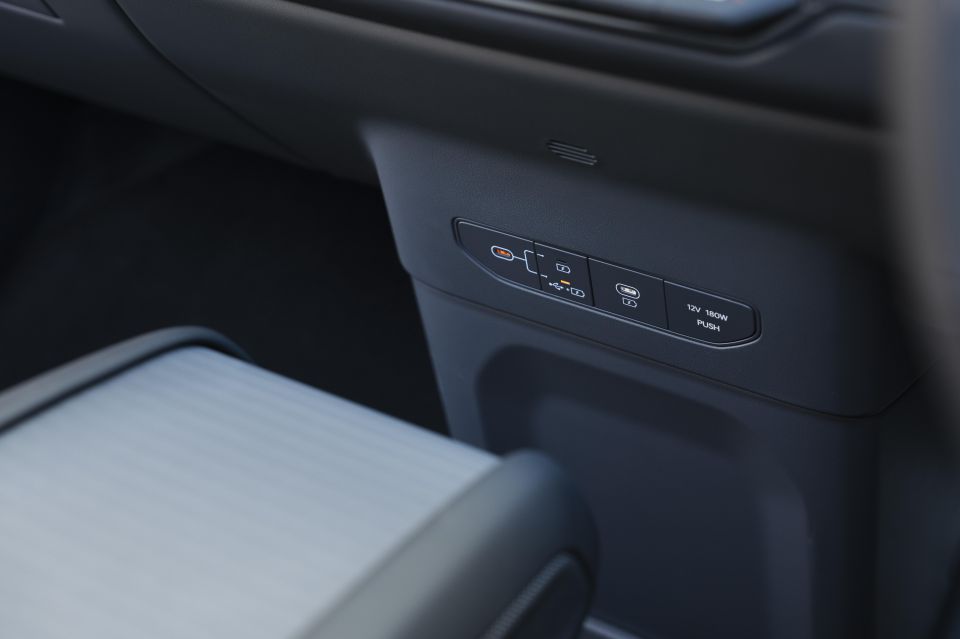
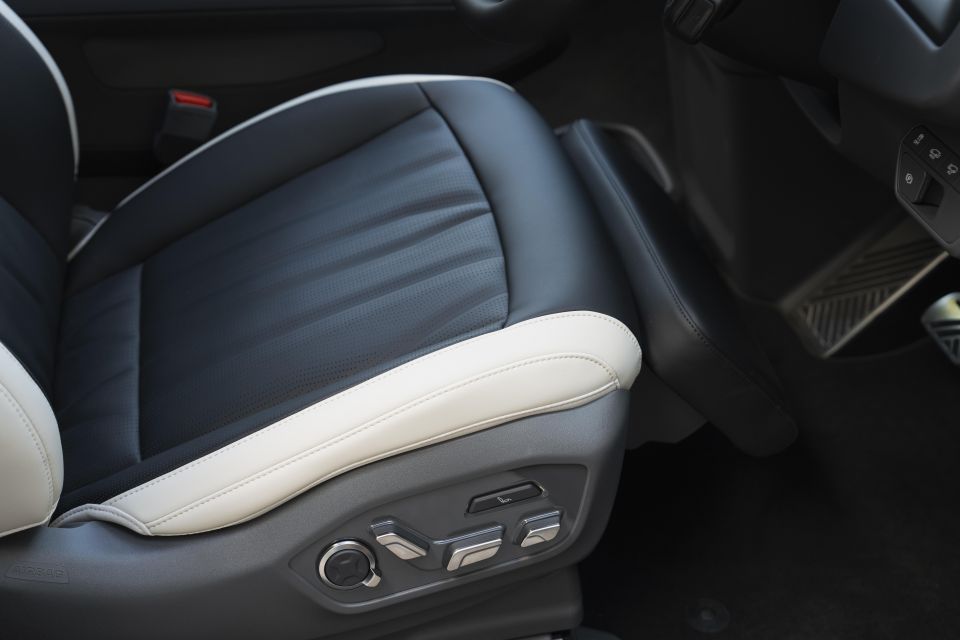
Beyond the planned update with wireless smartphone mirroring, the EV9 comes standard with 10 years of traffic information and map updates, on top of the seven-year complementary Kia Connect subscription with purchase.
Another new element of the EV9’s interior for Kia is the inclusion of fingerprint authentication, which allows users to start the car with a fingerprint reader. It will also allow the selection of driver profiles linked to your unique genetic code.
Storage is pretty good, with a big cubby under the floating centre console, huge centre cupholders and a tray featuring a wireless charging pad for your smartphone. There’s a shallow cubby under the front-centre armrest, as well as bottle holders in the doors.
The GT-Line picks up softer trimmings lining the sides of the centre console and a rolling lid for the adjustable cup holders, and you also get features like Digital Side Mirrors with displays in the doors, as well as a 14-speaker Meridian sound system.
Having now sampled these virtual mirror cameras in a range of models, I’m not averse to them and appreciate the novelty – as well as the reduced wind noise off the external housings – but it takes time to adjust, and you don’t have the same viewing angle and depth perception as conventional mirrors.
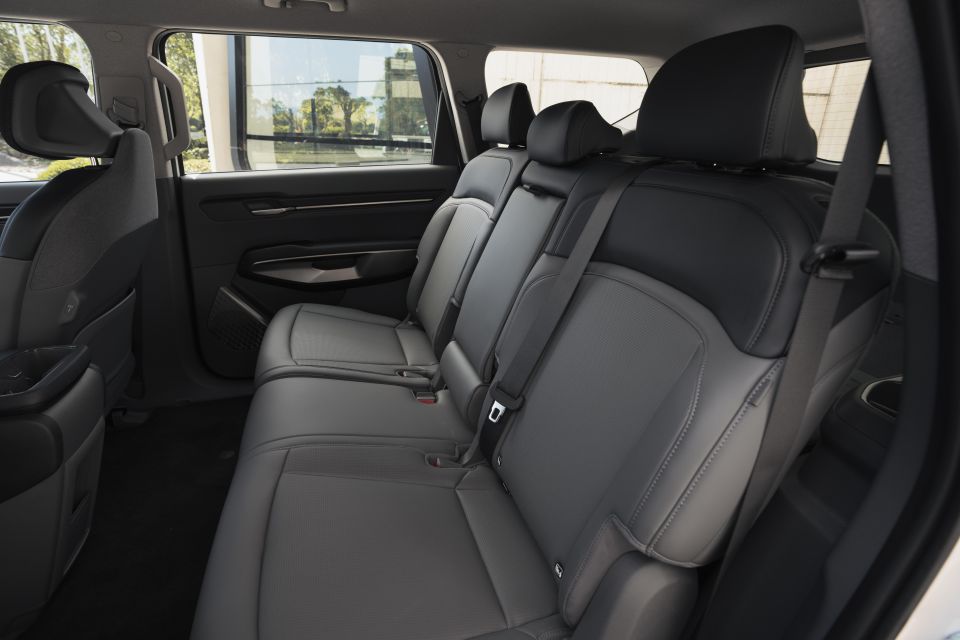
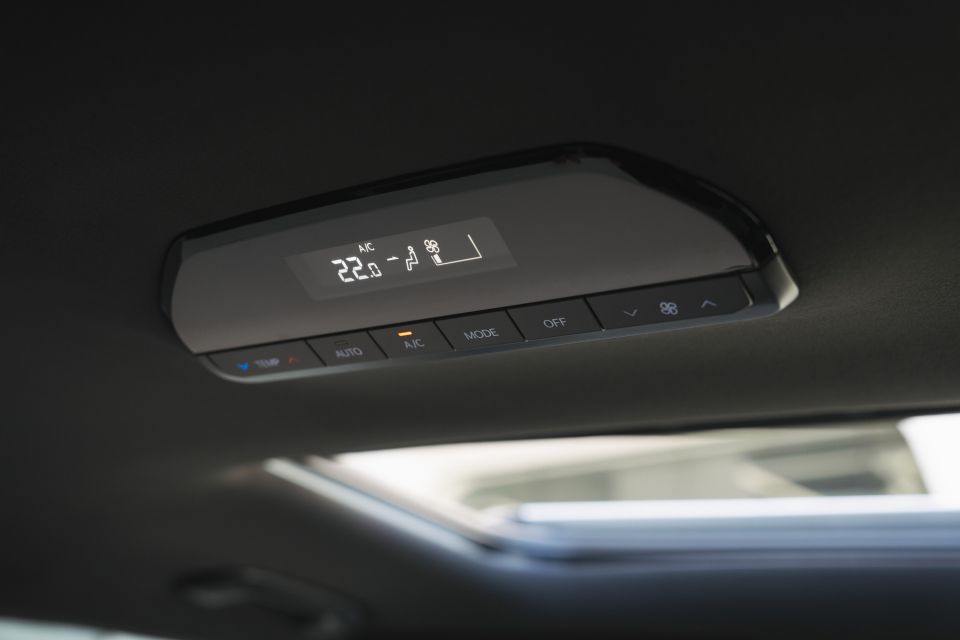
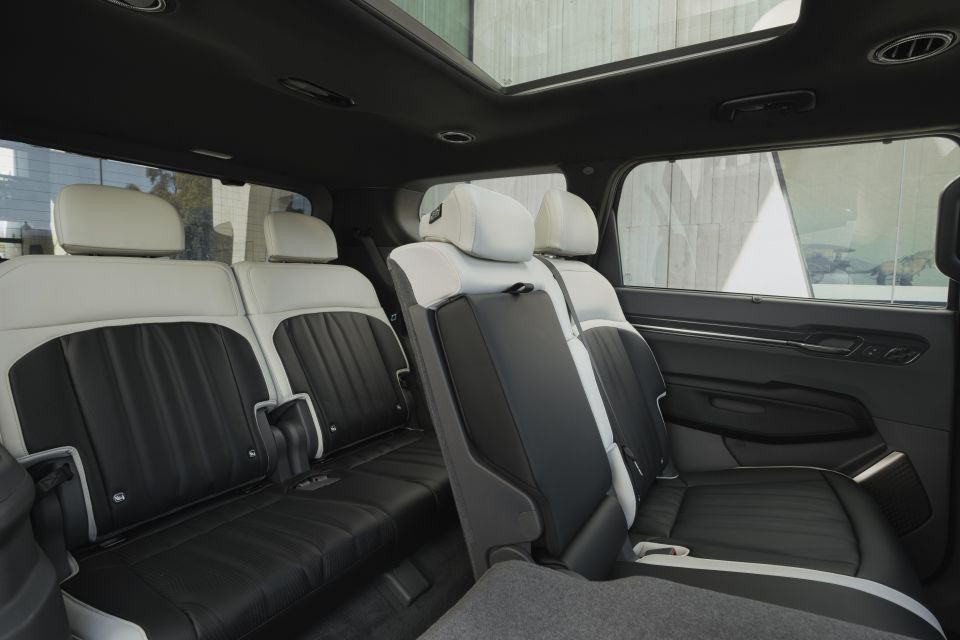
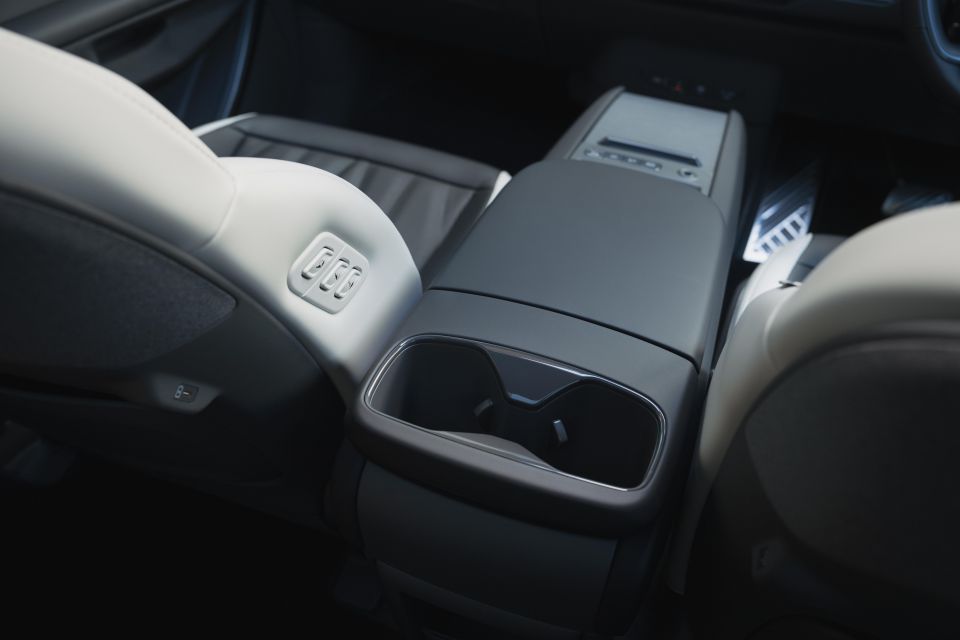
Kids and adults will love the back seat, which border on palatial in the second row. Regardless of trim there’s heaps of head, knee and leg room for taller occupants, while the wide body and flat bench mean you can fit three adults across pretty well.
The flat floor means foot- and toe room are great as well, and there are plenty of amenities like a separate zone of climate control accessed via a roof-mounted panel, USB-C ports on the front seatbacks, a fold-down centre armrest with cupholders; and if you get the GT-Line there are manual sunshades for the rear windows.
You also get a pair of extra cupholders at the rear of the centre console much like the Carnival, and the passenger seat can be adjusted by the ‘Walk-in Device” which can slide and recline the front pew to allow for more space in the rear.
The second-row seat slides and reclines, with a 60:40-split backrest. Further, there’s a one-touch release which quickly collapses and slides the seats forward to give better access to the third row. It’s a feature we’ve seen on the Sorento and Carnival, and it works really well.
Said third row is more Palisade than Carnival, with the high floor making for a knees-up seat position if you’re above average height like me. Slide the second row forward and you can actually fit adults back there thanks to good head room and leg room for the class, though a proper people mover is still a better full-time seven seater.
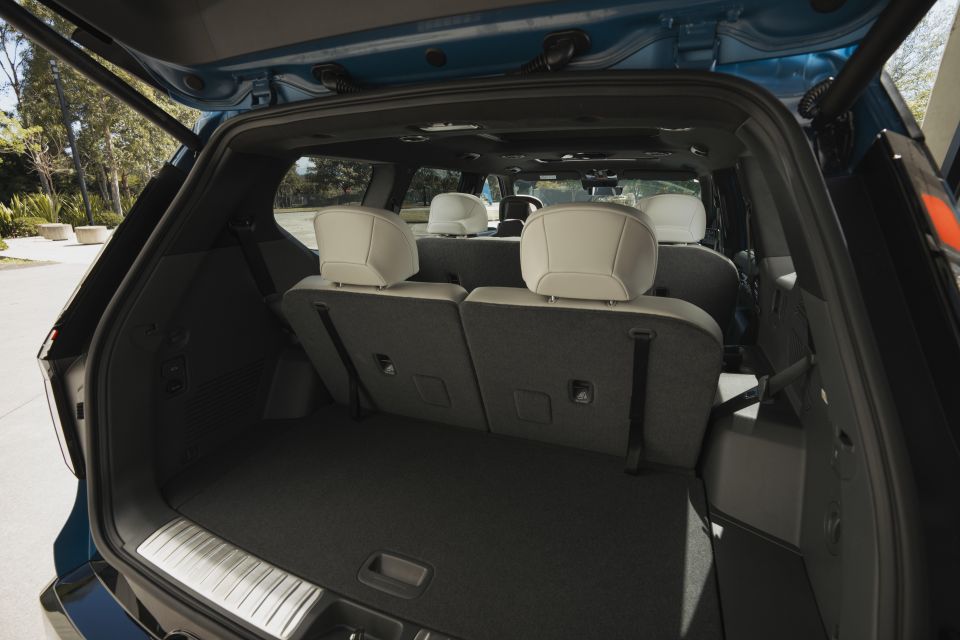
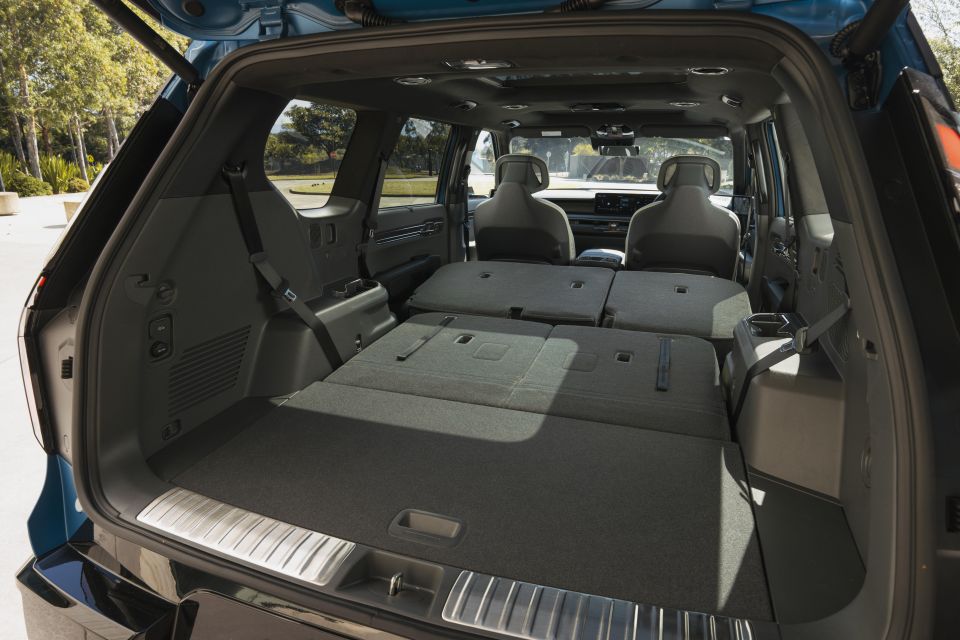

Like the Telluride and Palisade, the EV9 offers pretty solid boot space even with all three rows in use.
There’s a claimed 333L with seven seats in use, not far off hatchbacks like the Volkswagen Golf and Hyundai i30; expanding to 828L in five-seat configuration and a cavernous 2318L with the second and third rows folded. All quoted measurements are VDA.
While there’s standard tyre pressure monitoring across the range, there’s no actual spare wheel and tyre. Instead, there’s a tyre mobility kit which perhaps isn’t the best solution if you plan on roadtripping out of town.
Under the bonnet there’s a small ‘frunk’, which differs in volume depending on variant – it measures 90L for the Air, and 52L for AWD versions.
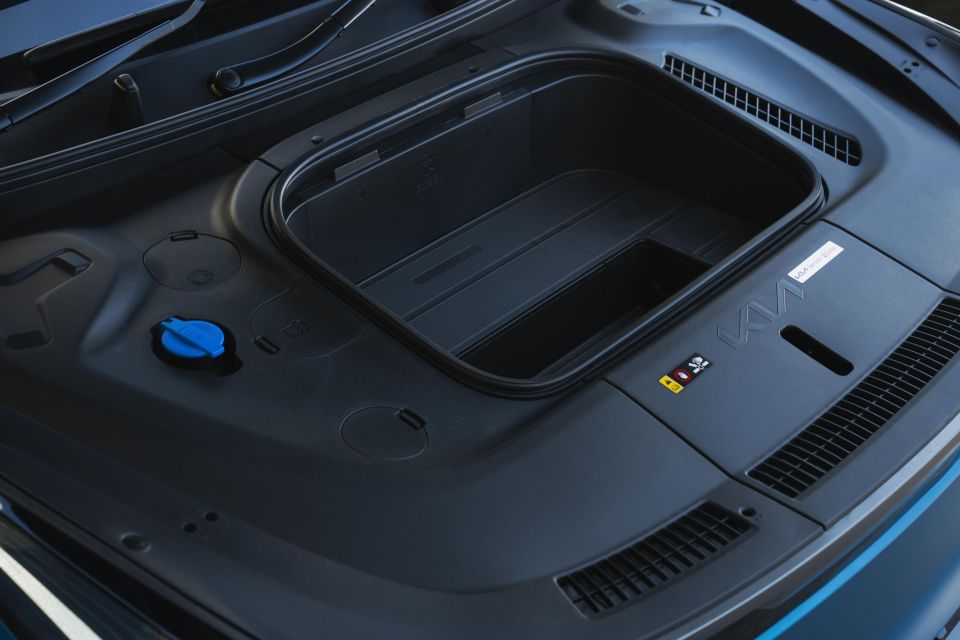
The base Air RWD features a single-motor drivetrain, with a 160kW/350Nm power unit on the rear axle. Claimed 0-100km/h is 8.2 seconds, with top speed rated at 190km/h.
It’s hooked up to a 76.1kWh lithium-ion Standard Range battery, featuring 348 cells and a voltage rating of 632V. Kia quotes a battery pack weight of 463.3kg, mounted under the floor. WLTP range is up to 443 kilometres for the Air (19.5kWh/100km), which is the lowest of the line-up.
Both the Earth and GT-Line get a dual-motor AWD drivetrain, with 141kW/350Nm electric motors mounted to each axle – system outputs are 283kW/700Nm. AWD models score a Long Range battery with 99.8kWh of capacity, featuring 456 cells and a voltage of 552V. Battery weight is 566.5kg.
WLTP range is 512km (22.3kWh/100km) for the Earth on 19-inch alloys, while the flagship GT-Line quotes 505km (22.8kWh/100km) on its larger 21-inch rims. Quoted acceleration times differ slightly for the AWD models, with the Earth claiming 6.0 seconds and the GT-Line cutting that to 5.3 seconds.
In Korea the 700Nm tune (up from 600Nm) is an over-the-air upgrade available for purchase via the Kia Connect store, which gets the faster 0-100 time. Kia Australia maintains both variants get 700Nm locally as standard, though only the GT-Line gets the faster acceleration time.
We saw energy consumption as low as 18-19kWh/100km around town, with highway driving upping that to anywhere between 20-22kWh depending on the topography – pretty much in line with the claims.

That’s actually pretty good when you consider you get similar real-world efficiency from the outgoing Polestar 2 and Volvo XC40 Recharge. It’s also better than we’ve experienced from the likes of the Audi Q8 e-tron and Mercedes-Benz EQS SUV.
As for charging, the EV9 has an on-board charger with 7kW single-phase and 10.5kW three-phase capacity, with a 10-100 per cent charge taking 7 hours for the Air, and 9 hours 5 minutes for the Earth and GT-Line.
DC charging at up to 350kW is possible thanks to the E-GMP platform’s 800V architecture, with 10 to 80 per cent taking as little as 20-24 minutes (RWD-AWD) at that rate. Worth noting, however, is E-GMP vehicles tend to max out around 250kW in real-world conditions, though Kia maintains 350kW is achievable using a suitable charger.
The EV9 is capable of towing up to 900kg braked in RWD guise, while AWD versions up that to 2500kg. Tare weight and GVM range depending on variant, with the Air listing 2312kg (tare) and 2960kg (GVM), the Earth 2552kg/3240kg, and the GT-Line 2636kg/3240kg.
Kia mentioned numerous premium European SUVs as benchmarks during the local evaluation and development process, and it shows.
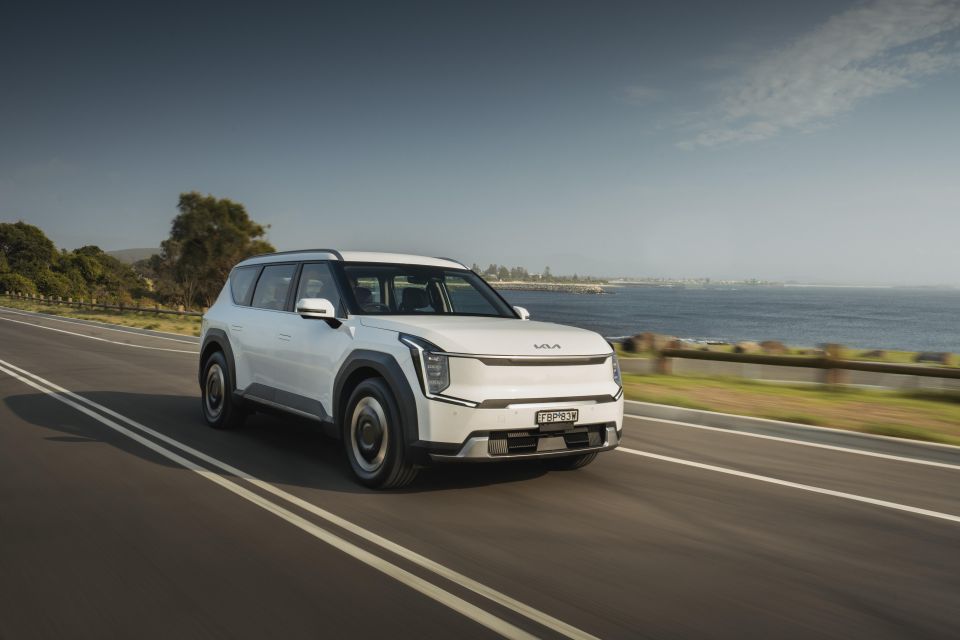
We set off from near Sydney Airport in the base EV9 Air, which while looking pretty plain offers impressive comfort and refinement for real-world inner-city and urban driving.
Riding on smaller wheels and chubbier tyres (255/60 R19) the base EV9 offers ride quality competitive with similarly sized European SUVs, despite the lack of air suspension. Kia says the RWD versions have a “slightly softer ride” than the AWD variants.
There’s McPherson multi-link suspension up front with a five-link setup down back, tuned for Australian conditions complemented with a locally-tuned power steering system.
Kia says the RWD versions of the EV9 have “slightly softer roll” whereas AWD models offer “balanced and flat handling with excellent grip and mid-corner response”. I’ll get to the GT-Line in a bit, but it was quite clear that the two setups have different personalities on the launch drive.
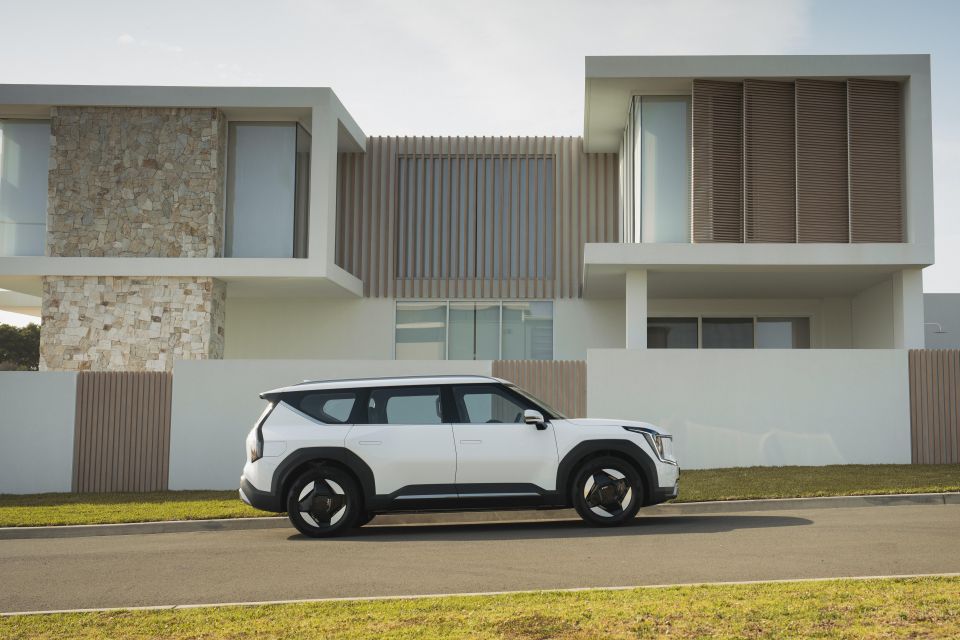
Performance from the base model may sound meek on paper, but 350Nm from rest is as much as you get from petrol V6s in similarly-sized rivals. It gets along fine and pulls nicely from standstill, and through the mid-range.
As we left Sydney city limits and headed towards the Southern Highlands, the EV9 demonstrated its highly capable and comfortable touring abilities as it settled beautifully into cruising at 110km/h.
Getting the EV9 to highway speeds is also effortless without being outright quick, with the same sort of muscular response you get from a diesel (think of the Palisade with its 147kW/440Nm 2.2D) without the associated clatter.
Refinement is a strong point, with road and wind noise kept to an impressive minimum – though the bluff wing mirrors on Air and Earth models do suffer some buffeting noise at higher speeds in windy conditions.
Kia made a point to detail various measures to improve NVH, going as far to benchmark the EV9 against several electric SUV rivals including the Tesla Model Y, Audi e-tron (now Q8 e-tron) and Jaguar I-Pace.
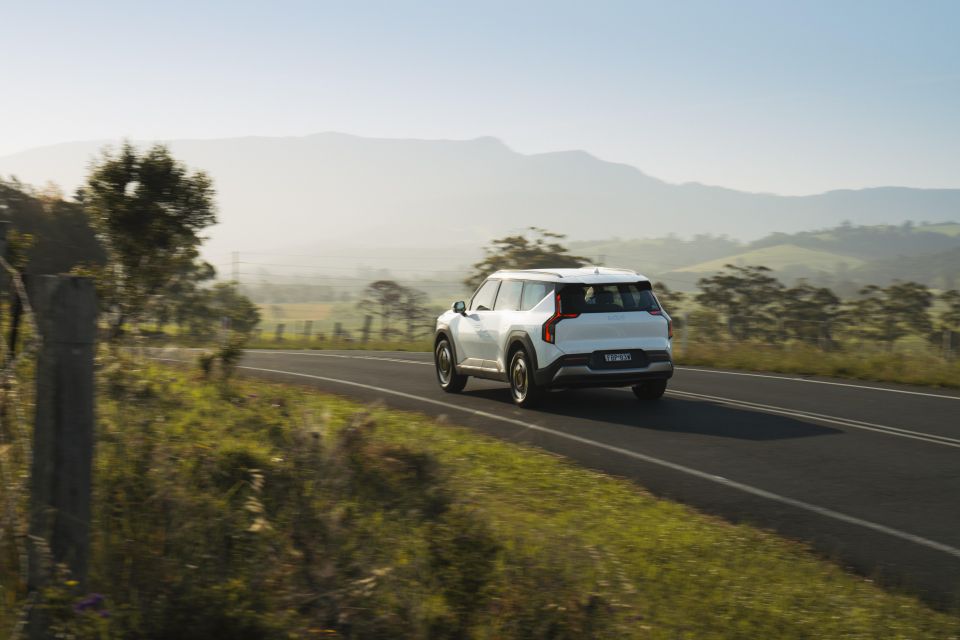
Where expert car reviews meet expert car buying – CarExpert gives you trusted advice, personalised service and real savings on your next new car.
Thanks to additional sound absorbing layers in the floor, foam-insulated EV-specific tyres and laminated glass on both the front and rear doors, Kia claims the EV9 is around 3-4dBA quieter than the Model Y, and 1-2dBA quieter than the Audi and Jaguar on average with respect to road noise and constant speed noise.
Kia also touted the EV9’s aerodynamic performance, which helps improve EV range and reduce wind noise. Despite its bluff, boxy proportions the Kia EV9 quotes a drag coefficient of just 0.28Cd, which matches the outgoing Audi e-tron SUV and betters the Jaguar I-Pace (0.29Cd).
Overall the EV9 RWD has a softer, more comfortable feel you’d expect from traditional SUVs, though with a level of accuracy and control that makes this big bus shrink around you.
Even on the winding roads up to Otford and Stanwell Park, the EV9 Air was easy to place and remained secure even on tight winding climbs, though it wasn’t necessarily being begged to be pushed harder.
Brake feel is also positive. The transition from regen braking to mechanical braking is pretty seamless, and there’s a wide range of regen levels from nothing to automatic or i-Pedal (one-pedal) modes to cater to everyone’s tastes.

After more highway driving in the Air on the way to our lunch stop, we hopped in the GT-Line and headed further south and inland, taking on a more dynamic stretch of high-speed B-roads as we headed for our final stop in Bowral.
The differences in tuning were noticeable, but it’s not like it’s a polar opposite in terms of feel. It’s still a comfortable and controllable thing to drive, but the GT-Line with its more focused chassis setup and 285/45 R21 rolling stock (with Continental tyres instead of Kumho/Nexen rubber) feels that little bit keener and grippier.
Add the extra grunt of the dual-motor drivetrain and all-paw traction, and the flagship feels keener to be pushed through bends and accelerates with gusto – it’s 3.0 whole seconds quicker to 100km/h than the single-motor model.
It’s never going to feel quite as sharp as something like a BMW X5 though; keep in mind this thing weighs over 2.6t in GT-Line guise and measures a massive 5010-5015mm long and 1980mm wide.
With that said, there’s little compromise to the overall comfort and refinement of the EV9 GT-Line. Sure it’s a touch firmer and tighter in feel, but it feels more in line with European rivals in this sense striking a good balance between comfort and dynamics. The slimmer Digital Side Mirrors also meant less wind noise on the highway.
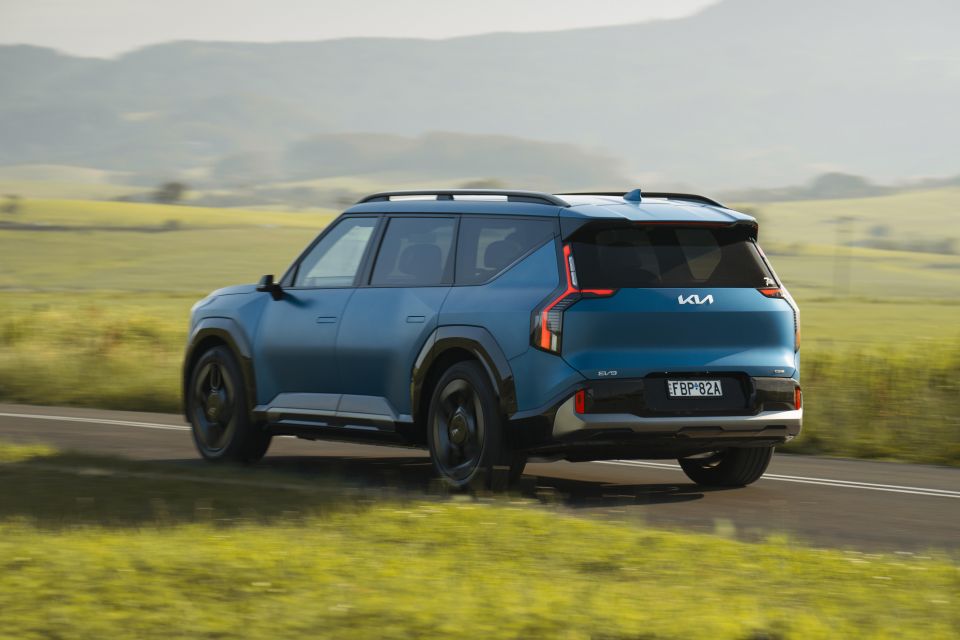
The EV9 ushers in new driver assistance tech for the brand in Australia – though we don’t get Level 3 autonomous driving capability (nor the associated hardware) due to local legislation.
Key updates include Highway Driving Assist 2.0 (HDA 2.0) which is a nav-based feature that automatically combines adaptive cruise control and lane centring functions on designated stretches of motorway. If you link it to the Intelligent Speed Limit Assist it’ll automatically adjust the set speed as limits change as well.
There’s a litany of cameras if you go higher up in the range. Opting for the Earth gets you surround cameras and Blind Spot View Monitor cameras which activate when you indicate, while the flagship GT-Line gets polarising Digital Side Mirrors and a Digital Centre Mirror which shows a live camera feed in the rear-view mirror if the second and third rows are filled with heads and luggage obscuring your view.
It’s a shame the base Air only gets a rear-view camera, given it’s a $100,000 car. I also would argue the Parking Collision Avoidance assists being reserved for higher models depending on which direction they monitor is also disappointing given the price.
Kia and Hyundai’s incessant chimes and bongs for the speed limit assistance system – which defaults to ‘on’ every time you start the vehicle due to new ANCAP/Euro NCAP protocols – can grate, but in this latest version you can permanently put the alert volume right down. The lane-keep assist can also get a bit grabby on skinny streets.
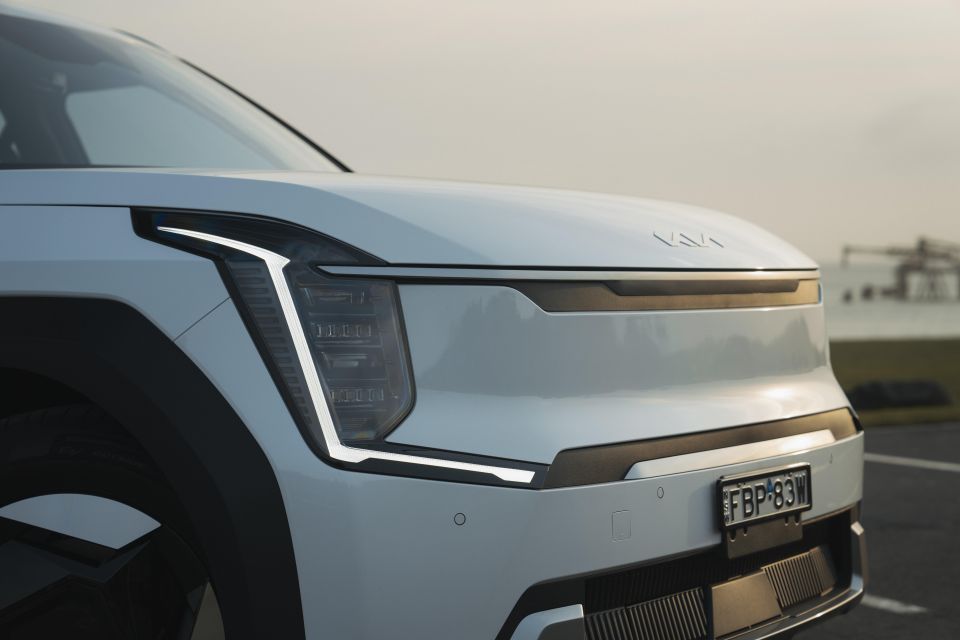
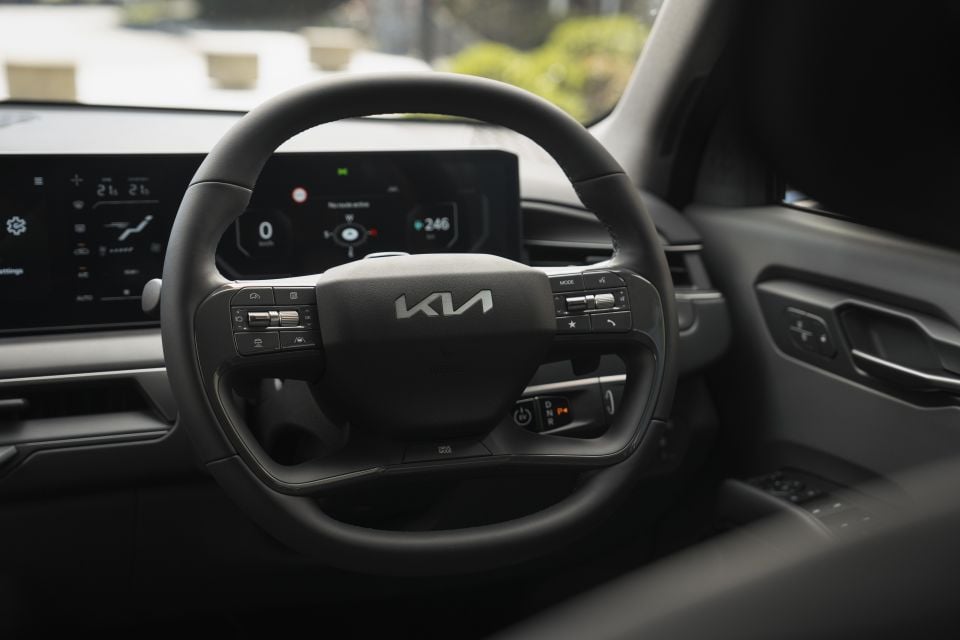


EV9 Air highlights:
Exterior
Interior
Convenience
EV9 Earth adds:
Exterior
Interior
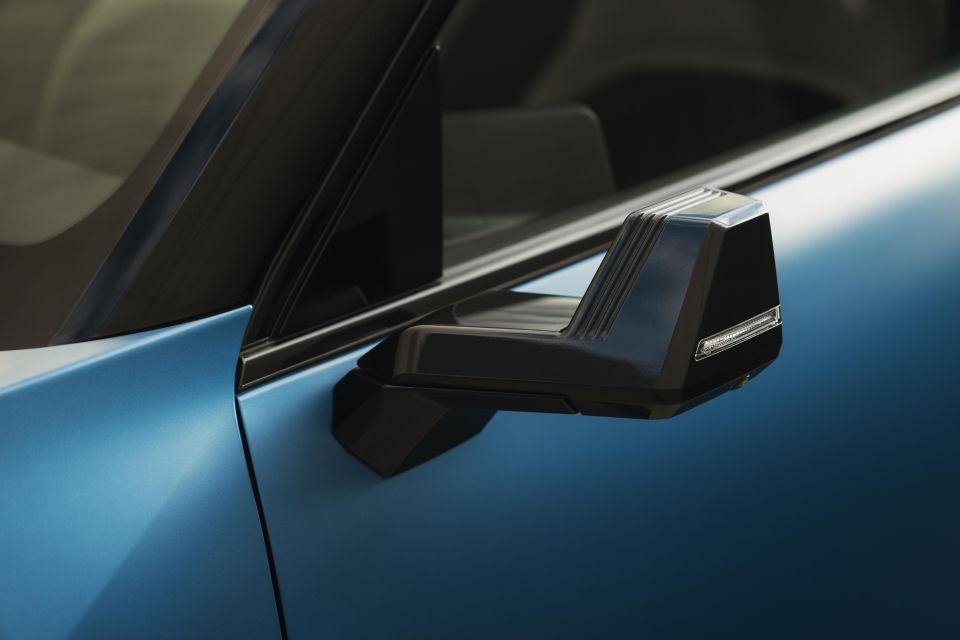
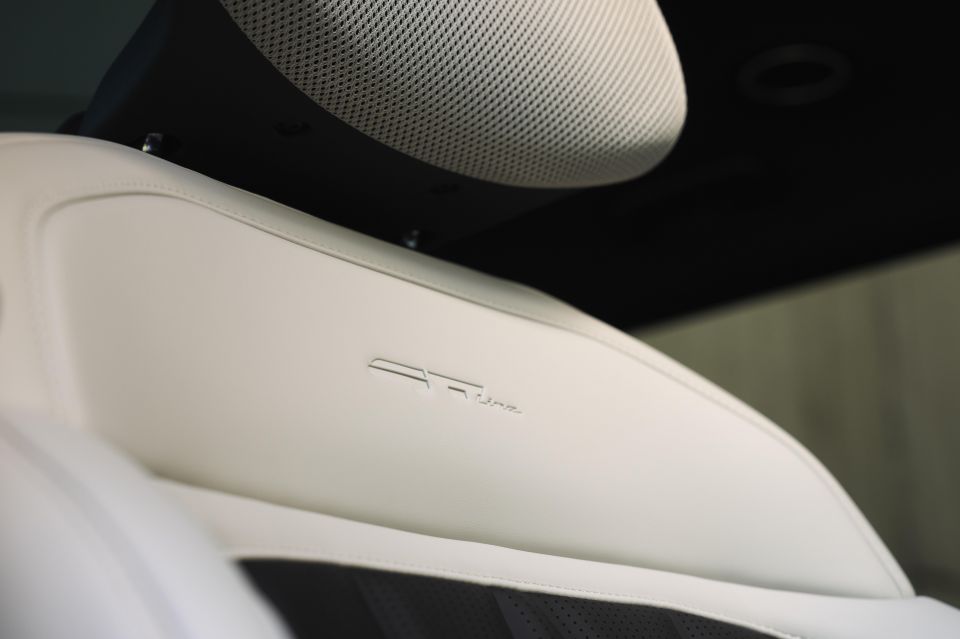
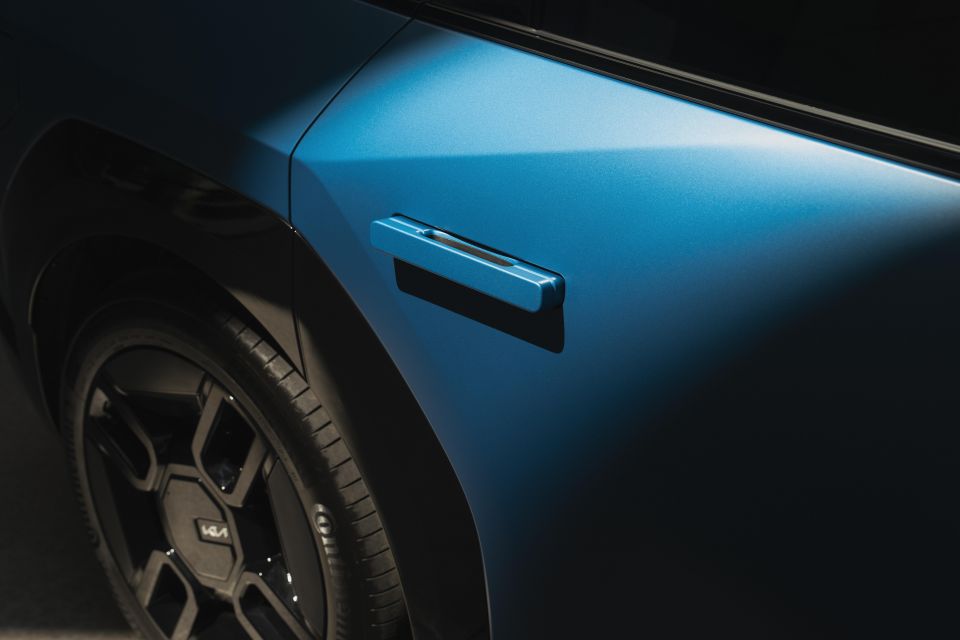

EV9 GT-Line adds:
Exterior
Interior
Convenience

Standard: $NCO
Premium Paint: $990
Matte Paint: $3495*
*Includes ceramic paint protection
The EV9 is being crash tested by Euro NCAP imminently, but at launch there’s no ANCAP or Euro NCAP safety rating.
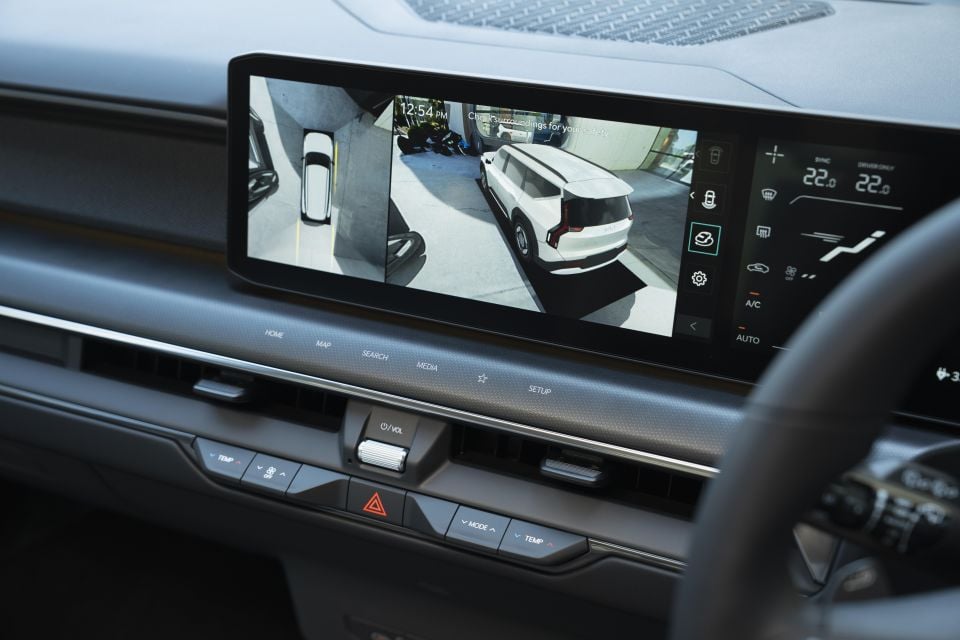
Kia Australia’s team is firmly aiming for a five-star safety rating though, and the EV9 is equipped with one of the most comprehensive suites of safety features and technology in the brand’s portfolio.
Standard safety features include:
EV9 Earth adds:
EV9 GT-Line adds:
As with the wider Kia line-up, the EV9 is covered by a seven-year, unlimited-kilometre warranty. The high-voltage battery and motor are covered for seven years or 150,000 kilometres – whichever comes first.
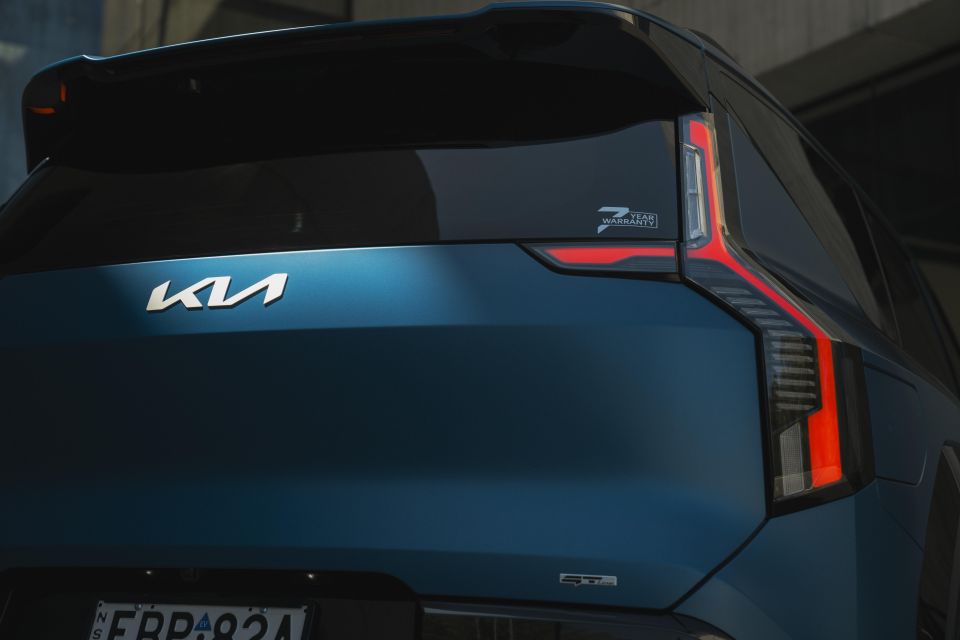
The EV9 requires maintenance every 12 months or 15,000 kilometres, with several pre-paid packages available. Kia offers three-, five- and seven-year packages which list for $706, $1351 and $1997 respectively.
Unfortunately Kia doesn’t offer a public charger subscription like many premium brands do at this end of the EV market, though representatives told media it’s working on a “potential supplier” for public and home charging solutions – the former likely for dealers – with announcements to be made next year.
Kia Australia is also looking into a guaranteed future value program to give buyers of such a new and expensive vehicle added peace of mind around residuals when it comes time to trade-in.
The EV9 is just another example of why you shouldn’t consider Kia (or Hyundai) as merely ‘cheap’ brands anymore.
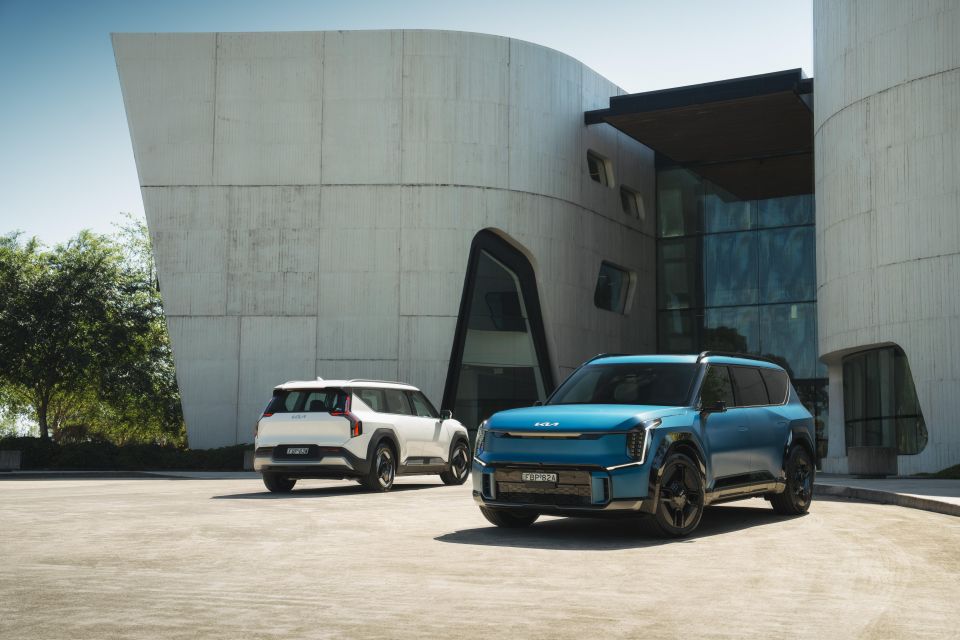
Yes the company needs to remember its attainable roots – that’s why cars like the Picanto, Stonic and Cerato still exist – but the EV9 is the latest in a series of high-end cars showing off the brand’s ability to compete with the Euros.
If punters can justify $100,000+ for a Volkswagen Touareg, prospective buyers in this space should be able to do the same for the Kia EV9. The level of technology and features on offer is up there with the best, and it offers one of the most spacious cabins you can buy in any SUV for this money.
Plus, it’s underpinned by an great dedicated electric platform with good performance and driving range, the latter of which is actually achievable based on our real-world testing. You also get seven years of warranty and connected services thrown in, which is handy for long-term ownership concerns.
I will say the base Air is pretty drab inside for $100,000; even if the features list is fulsome. It’s also a shame safety and convenience features are reserved for higher grades forcing you to spend $110,000-$120,000 of your hard-earned. Some will lament the inability to have conventional mirrors on the GT-Line also.
But you get a lot of metal for your money. If the concept car looks have captured your attention, and you’re looking for something electric that has a full-size seven-seat cabin that isn’t a van, this is a compelling new option.
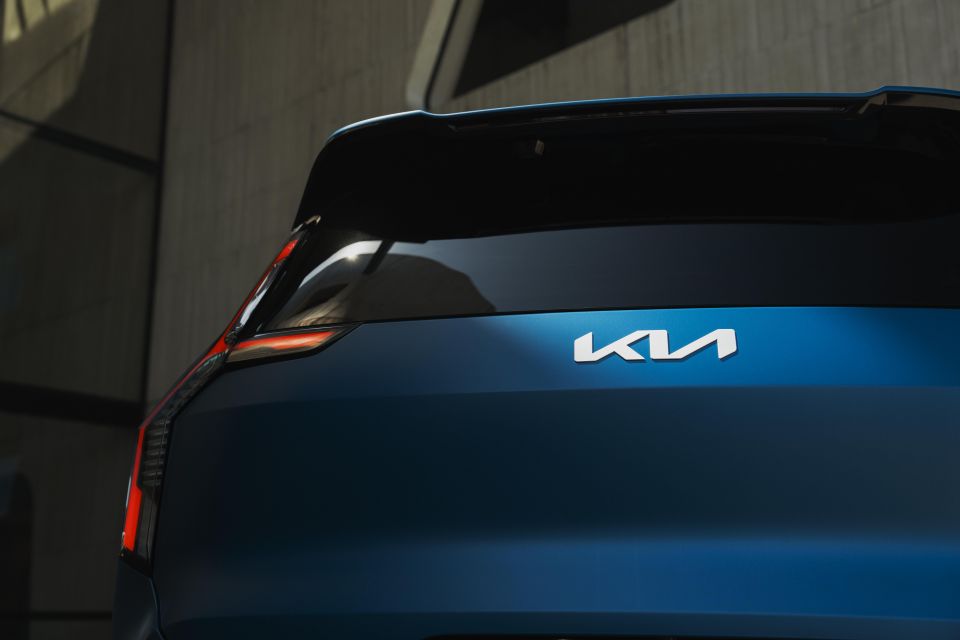
Click the images for the full gallery
BUY: Kia EV9 MORE: Everything Kia EV9
Where expert car reviews meet expert car buying – CarExpert gives you trusted advice, personalised service and real savings on your next new car.
James is an automotive journalist based in Melbourne, Australia. Before joining CarExpert.com.au in 2020, James has worked at leading auto media outlets including Carsales and CarAdvice, as well as at Pulse agency for Ford Australia's communications team. In 2019 James made Mumbrella's 'Top 20 most prolific web authors in Australia' list after publishing 1,360 articles between March 1, 2018 and February 28, 2019 for CarAdvice. James is also an Ambassador for Drive Against Depression – an Australian charity whose mission is to support mental wellness through the freedom of driving and a shared love of cars.


William Stopford
4 Days Ago
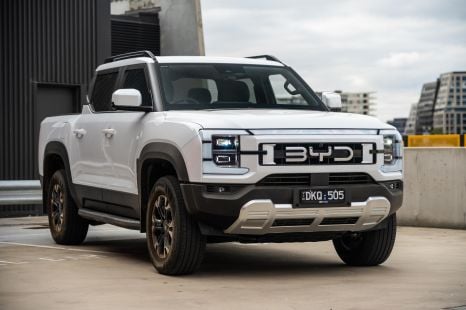

Max Davies
3 Days Ago
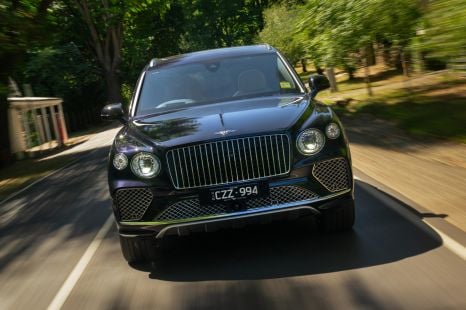

Josh Nevett
2 Days Ago
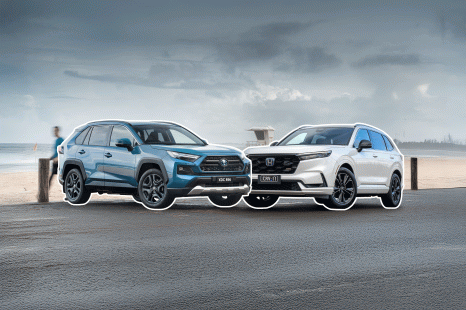

Andrew Maclean
2 Days Ago
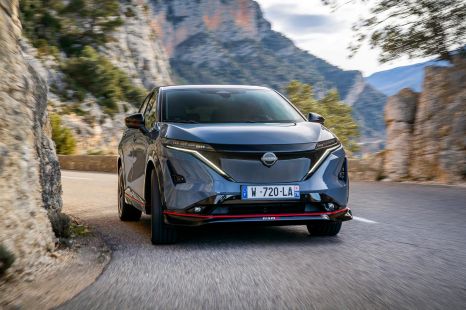

Shane O'Donoghue
1 Day Ago
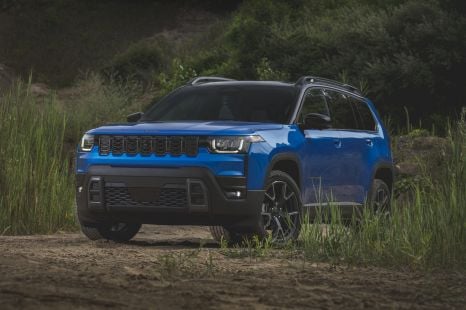

William Stopford
16 Hours Ago